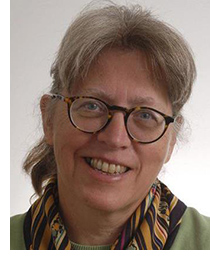Thinking Globally, Acting Locally: CIMMYT’s Global Collection of Maize in its Center of Origin and Diversity
Denise E. Costich, Senior Scientist and Curator of the Maize Collection of the CIMMYT Germplasm Bank
 Abstract: Maize is the world's most multipurpose crop, a food staple for hundreds of millions of people in the developing world, feed for billions of livestock, and raw material for an increasing number of industrial and biofuel uses. Cultivated on 184 million hectares (M ha) globally, maize is fundamental to global food and economic security, and of immense historical and current cultural value. Over the past fifty years, the International Maize and Wheat Improvement Center (CIMMYT) has maintained one of the largest global collections of maize genetic diversity, a critical resource for the continued improvement of this crop plant. Most importantly, CIMMYT is a member institution of an international plant genetic resources network, where there is guaranteed secure back up of the collections, where the germplasm is considered a global good, freely distributed to anyone in the world, and where there is the mandate, the dedication, and, up to the present time, sufficient funding, to maintain the seed in healthy, disease-free condition. CIMMYT's location in Mexico, the center of origin of maize, has been fortuitous, resulting in a collection that represents the full range of genetic diversity found in the landraces and the wild relatives of this crop.
Abstract: Maize is the world's most multipurpose crop, a food staple for hundreds of millions of people in the developing world, feed for billions of livestock, and raw material for an increasing number of industrial and biofuel uses. Cultivated on 184 million hectares (M ha) globally, maize is fundamental to global food and economic security, and of immense historical and current cultural value. Over the past fifty years, the International Maize and Wheat Improvement Center (CIMMYT) has maintained one of the largest global collections of maize genetic diversity, a critical resource for the continued improvement of this crop plant. Most importantly, CIMMYT is a member institution of an international plant genetic resources network, where there is guaranteed secure back up of the collections, where the germplasm is considered a global good, freely distributed to anyone in the world, and where there is the mandate, the dedication, and, up to the present time, sufficient funding, to maintain the seed in healthy, disease-free condition. CIMMYT's location in Mexico, the center of origin of maize, has been fortuitous, resulting in a collection that represents the full range of genetic diversity found in the landraces and the wild relatives of this crop.
The necessary tools to enable full realization of the inherent usefulness of the genetic resource diversity in both cultivated and wild species are under continuous and innovative development. I will highlight examples of how the germplasm in the CIMMYT collection is currently being used for gene discovery for disease resistance and abiotic stress tolerance.
An important statistic to consider is that, according to the FAO, globally, small-scale farmers contribute between 50 and 70 percent of the total food supply – more than industrialized farming. Over 90 percent of the world's 570 million farms are classified as "small-scale," with at least 75 percent of farms in the developing world being less than a hectare in size. These farmers are growing local varieties or landraces, usually from their own saved seed. They do not have ready access to germplasm banks, which were developed mainly for the use of breeders and researchers. There is a growing movement among national and international germplasm banks to interact directly with farmers and farmer organizations, providing seed and technical support for activities such as reintroductions of accessions to their sites of origin and the establishment of community seed banks. I will describe CIMMYT's projects working directly with maize farmers in Mexico and Guatemala.
Bio: Denise Costich is a passionate defender of maize genetic resources, devoting the past 18 years to research topics related to its taxonomy, evolution and conservation. She received her B.S. in Biology with a Concentration in Ecology and Systematics from the College of Agriculture and Life Sciences of Cornell University. In the middle of her undergraduate studies, she went to Kenya with Friends World College and ended up as a field assistant on a baboon research project. She eventually went on to graduate school at the University of Iowa, after another field research assistant gig in another exotic location—the Brazilian Amazon. In pursuit of a better understanding of plant breeding systems, she did her Ph.D. thesis research as a Fulbright Scholar in Spain on the ecology and evolution of dioecy in a wild cucurbit, Ecballium elaterium. Through a series of postdoctoral positions, Denise’s research interests became more genetical, and she landed in her first maize lab in 2000, at the Boyce Thompson Institute, back to the campus of her alma mater. Interest in crop evolution and plant population biology lead her to join the lab of Ed Buckler, where she spent six fascinating and productive years. In 2012, the opportunity to apply her diverse knowledge and skills in an international agricultural research-for-development setting presented itself, and she became the fourth Curator of the Maize Collection of the CIMMYT Germplasm Bank near Mexico City.
